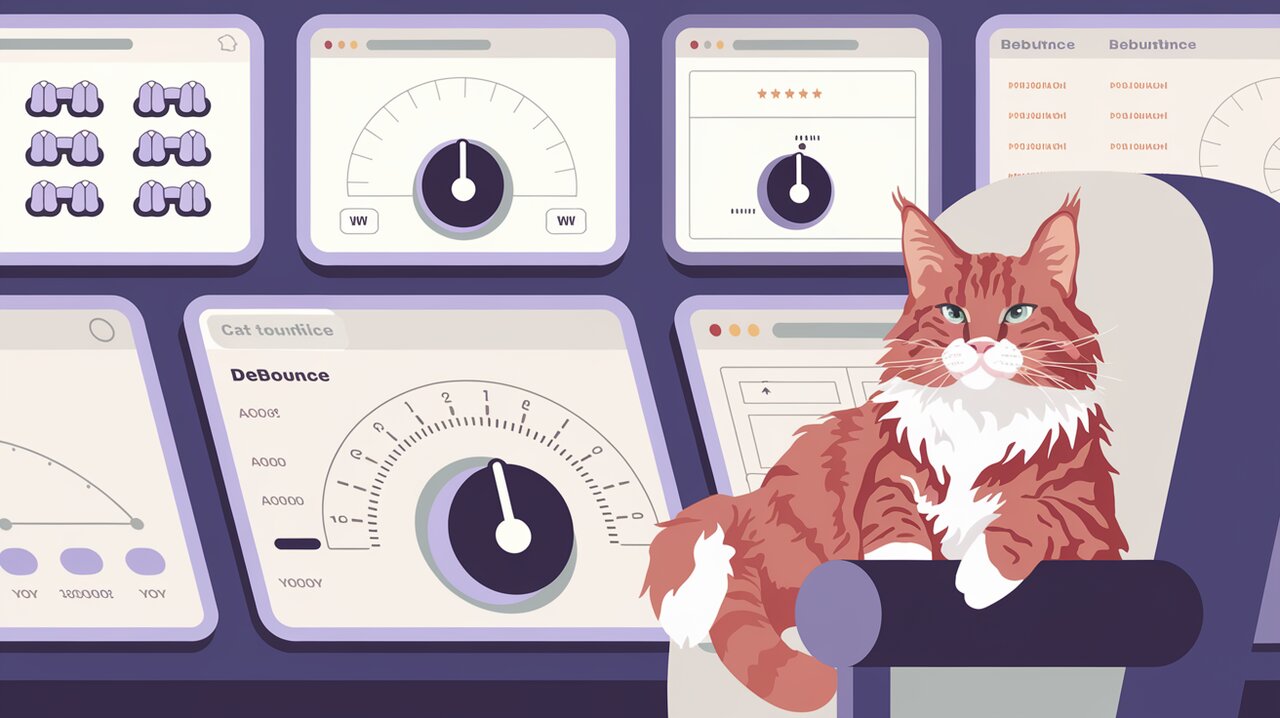
Taming the Redux Action Flood: Debounce with Finesse
In the realm of Redux applications, managing the frequency of dispatched actions can be a game-changer for performance and user experience. Enter Redux Debounce, a powerful middleware that brings the art of debouncing to your Redux action flow. By allowing you to elegantly control when and how often certain actions are dispatched, this library helps you create more responsive and efficient applications.
Debouncing: The Performance Enhancer Your Redux Store Needs
At its core, Redux Debounce is an FSA-compliant (Flux Standard Action) middleware that introduces a sophisticated layer of control over your Redux actions. It allows you to delay the processing of rapid-fire actions, coalescing them into a single, more manageable event. This is particularly useful for scenarios like search-as-you-type functionality, window resizing events, or any situation where you want to limit the frequency of state updates.
Key Features of Redux Debounce
- FSA Compliance: Works seamlessly with Flux Standard Actions, maintaining consistency in your Redux ecosystem.
- Flexible Configuration: Offers both simple and advanced debounce setups to suit various use cases.
- Multiple Debounce Strategies: Supports different debounce configurations for different action types.
- Performance Optimization: Helps reduce unnecessary renders and state updates, leading to smoother application performance.
Getting Started with Redux Debounce
Installation
To bring the power of debouncing to your Redux application, start by installing the redux-debounce package:
npm install --save redux-debounce
Or if you prefer yarn:
yarn add redux-debounce
Basic Setup: Configuring Your Redux Store
Integrating Redux Debounce into your existing Redux setup is straightforward. Here’s how you can configure your store to use the debounce middleware:
import { createStore, applyMiddleware } from 'redux';
import createDebounce from 'redux-debounce';
import rootReducer from './reducers';
// Define your debounce configuration
const debounceConfig = {
simple: 300 // Debounce actions for 300ms
};
// Create the debounce middleware
const debounceMiddleware = createDebounce(debounceConfig);
// Apply the middleware to your store
const store = createStore(
rootReducer,
applyMiddleware(debounceMiddleware)
);
In this setup, we’ve created a simple configuration that will debounce actions with a ‘simple’ meta tag for 300 milliseconds. The createDebounce function takes this configuration and returns a middleware that we then apply to our Redux store.
Creating Debounceable Actions
With the middleware in place, you can now create actions that will be debounced. Here’s an example of how to structure such an action:
const debouncedAction = () => ({
type: 'USER_INPUT_CHANGE',
payload: { /* your payload here */ },
meta: {
debounce: 'simple'
}
});
The key here is the meta object with a debounce property. This tells the middleware to apply the ‘simple’ debounce configuration to this action.
Advanced Usage: Fine-Tuning Your Debounce Strategy
Configuring Complex Debounce Behaviors
Redux Debounce offers more than just simple time-based debouncing. You can create sophisticated debounce strategies for different action types:
const advancedConfig = {
search: {
wait: 500,
maxWait: 1000
},
resize: {
wait: 200
}
};
const debounceMiddleware = createDebounce(advancedConfig);
In this configuration, ‘search’ actions will be debounced for 500ms, with a maximum wait time of 1000ms, while ‘resize’ actions have a simpler 200ms debounce.
Implementing Advanced Debounced Actions
Let’s see how to use these advanced configurations in your actions:
const debouncedSearch = (query) => ({
type: 'SEARCH_QUERY',
payload: { query },
meta: {
debounce: 'search'
}
});
const debouncedResize = (dimensions) => ({
type: 'WINDOW_RESIZE',
payload: { dimensions },
meta: {
debounce: 'resize'
}
});
These actions will now be processed according to their respective debounce configurations, allowing for fine-grained control over different types of user interactions.
Maximizing Efficiency with maxWait
The maxWait option is particularly useful for ensuring that an action is eventually processed, even in scenarios of continuous triggering. This can be crucial for maintaining responsiveness in your application:
const criticalUpdateConfig = {
criticalUpdate: {
wait: 1000,
maxWait: 5000
}
};
const criticalUpdateAction = (data) => ({
type: 'CRITICAL_UPDATE',
payload: data,
meta: {
debounce: 'criticalUpdate'
}
});
In this example, the CRITICAL_UPDATE action will be debounced for 1 second, but will forcefully dispatch after 5 seconds if it’s being continuously triggered. This ensures that critical updates are not indefinitely delayed.
Wrapping Up: The Power of Controlled Action Flow
Redux Debounce brings a new level of control to your Redux applications. By intelligently managing the flow of actions, you can create more responsive, efficient, and user-friendly experiences. Whether you’re dealing with rapid user inputs, resource-intensive operations, or complex state updates, this middleware provides the tools you need to optimize your application’s performance.
Remember, the key to effective debouncing is finding the right balance for your specific use case. Experiment with different configurations to find the sweet spot that provides the best user experience while maintaining the responsiveness of your application.
By incorporating Redux Debounce into your toolkit, you’re taking a significant step towards creating Redux applications that are not just functional, but truly performant and user-centric. Happy debouncing!
